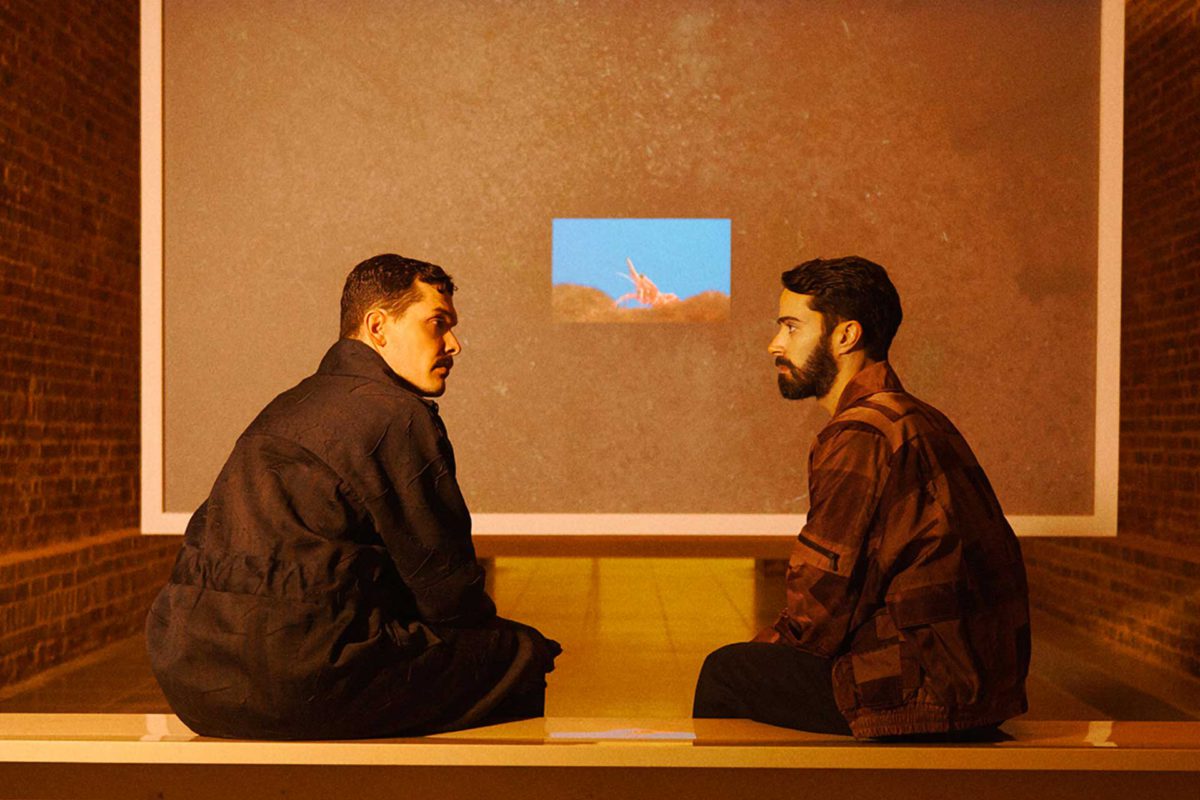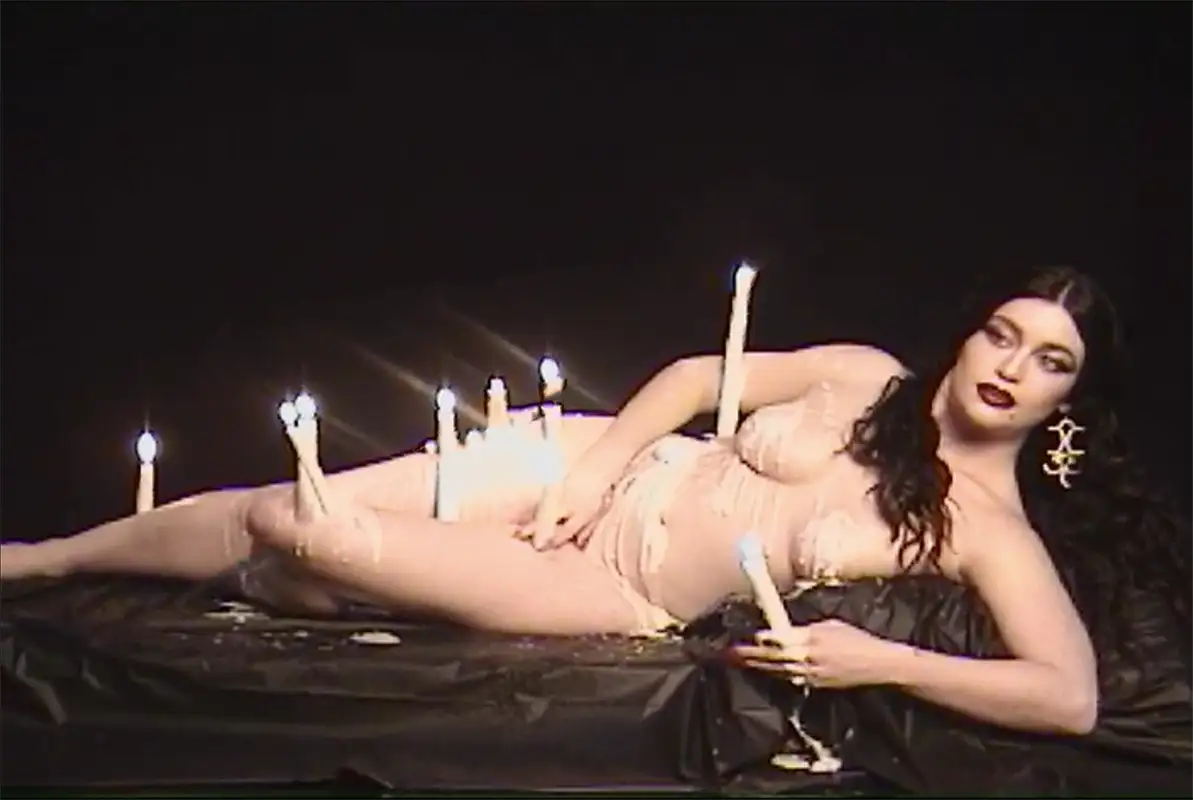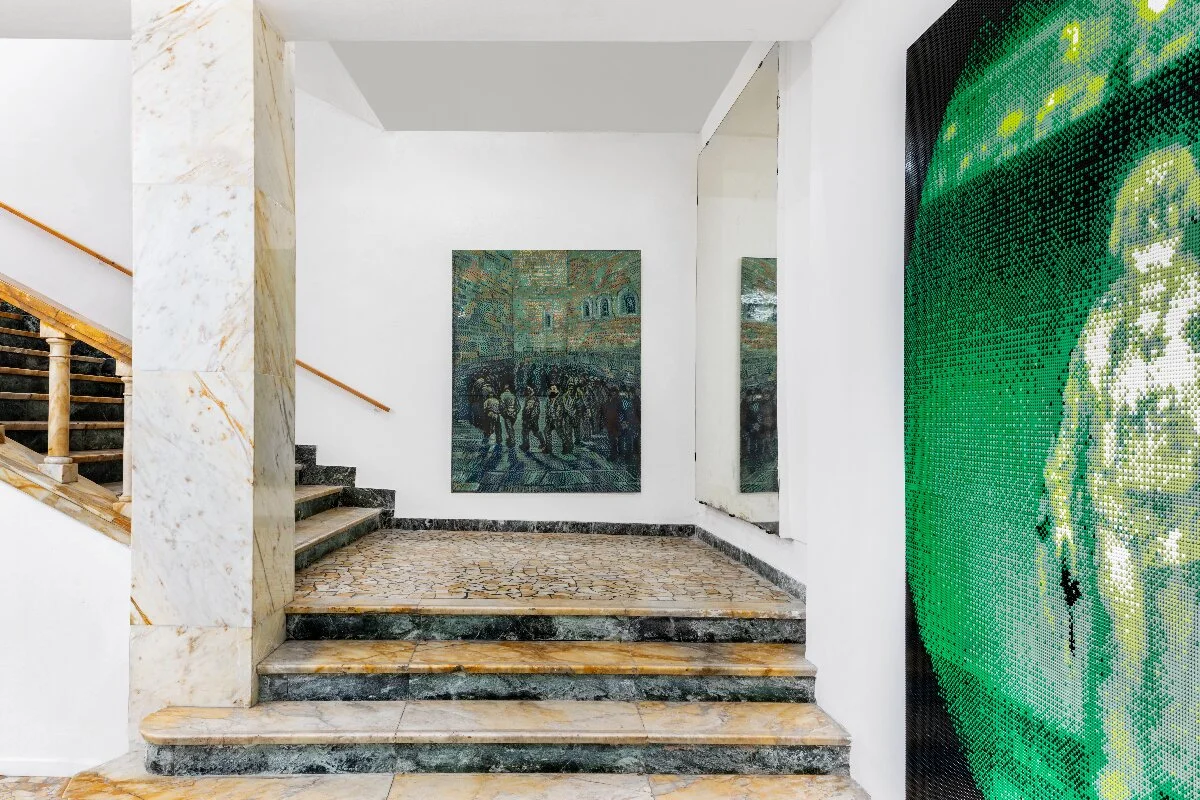In conversation with Andrea Trimarchi and Simone Farresin: «Everything for us starts with words and concepts, not shapes»
Formafantasma Cambio: review
Cambio — the recent exhibition of design duo Formafantasma at London’s Serpentine Sackler Gallery — does not exhibit any design object in the accepted sense; it does not showcase products but a way of thinking. «Cambio looks through the relationship between humankind and its ecosystem. The process of growth, trade, production, utilization, and even disposal of wood, which is the only construction material which humankind doesn’t extract but grows».
The cambium of any species of wood references the membrane that runs between the bark and the sapwood, and which continuously produces the two materials in both directions, at the same time feeding and protecting the trunk. The vascular cambium is also a fundamental process that helps plants and trees adapt to climate changes and evolve. It represents the most primordial process of prototyping known to nature.
The inception of Formafantasma
Simone Farresin, together with his design copilot Andrea Trimarchi, founded the studio Formafantasma I 2009 in the Netherlands. Cambio is an illustration of how any act of design, that is to say, a deliberate choice to change and shape nature by human intervention, carries a responsibility of knowledge. In the case of Cambio, the disciplines involved a range from biology to forestry, as well as the social and even the forensic implications (the anatomic study of wood can provide detailed information as to its origins, age, and treatment, thus exposing its illegal trade) of choosing a natural material.
For Formafantasma, this unusual and liberating exhibition format was made possible by the discerning vocation of the Serpentine Sackler Gallery — not technically a museum in itself inasmuch as it has no permanent collection — but an illuminated Kunsthalle of sorts, an open forum of discussion where the designer duo was able to build a full sensorial path without having to worry about the production of objects.
«If anything, the only pieces of traditional furniture we have built for the exhibit were merely functional tools such as tables and shelves that we used for the set design». Design is at the service of the idea and not the other way around. At the same time, cambio also means change in Simone and Andrea’s native Italian; a radical change, a Copernican shift, is what Formafantasma wishes would happen in order to revolutionize the way we think about design and the exploitation of the world’s natural resources in general.
Andrea Trimarchi and Simone Farresin – Ore streams
«The biggest utopia of modernity is that resources are infinite. There lies the biggest risk, to assume that anything defined as technological innovation is fundamentally good and sustainable. It is not. In our previous show Ore Streams [December 2017, Melbourne] we investigate the recycling of electronic waste, not just from a design point of view but from a moral one. Take smartphones today, which we salute as the finest frontier of technology at the service of human progress: we are led to think that innovation is generated by adding functions and capacity».
«But in fact, smartphones too are taken into the vortex of planned obsolescence. Instead, true design innovation would be expressed in making them more durable, more reparable, more dismountable, not just lighter. A good and sustainable industrial product starts from an idea, the prototype, and should evolve into an instrument, a tool which serves a purpose and that is well-designed and durable, timeless. Once the idea is ethically sound and materially solid, its industrial reproduction should appear neutral, as it were, lest it only results in manufacturing gimmicky embellishments that clutter everyday life».
Utopia is possible
A positive model of utopia has already been advocated by designer Alessandro Mendini who claims that having a guiding utopia means setting an ambitious objective that sits just about beyond the reach of one’s possibilities, so that one always strives to achieve an ideal. Mendini maintains that today all is pragmatic, realistic — too realistic — entirely technology-driven, and that our view of the world is suffering as a consequence. Formafantasma believes that this good kind of utopia is possible and it is the responsibility of every designer to ask themselves what impact each design decision has on the world and its resources.
«We have claimed to be collectively stalling in postmodernity for too long. The way we will truly move beyond modernity is to recognize and value the ethical implication of every human choice». The whole premise behind Cambio becomes a working methodology: at a time when even the most basic piece of digital advertising that reaches us via social platforms aspires to be anointed with the chrism of storytelling, this exhibition tells a story aimed at divulging, informing and shaping a social conscience.
The two designers do not like to join the bandwagon of defining themselves as storytellers. «Everything for us starts with words, concepts, not shapes. First of all, there are two of us, so communicating and putting ideas into words is a necessity. We want to understand before designing. This doesn’t mean that a project cannot start by intuition or because we get seduced by the potential of a certain material (in the past we used lava, animal bladders, reclaimed plastic and discarded leather amongst other sources), but in our view, design is always a process that starts from research, it never has the fixed objective of building a certain shape».
SEM (search engine marketing) algorithms
Tracing the ideal lines of a sustainable new world using language, one has to tackle the dilemma of how words themselves have become a sort of currency. The algorithms that govern search engines to gain visibility in an ever more digital market have accelerated the development of a superficial, if democratic, depiction of our world. The principle behind SEM (search engine marketing) regulates the hierarchy of all results offered to us whenever we search for any word online: each website appearing in the result page aims at increasing their visibility, and hence ranking, through paid advertising by bidding on keywords.
Before any purchase happens online, someone has already bid on and bought the words that have led us there. And the more we follow keywords down these digital rabbit holes, the more the underlying algorithms will register our preferences only to offer us more of the same. This system, according to Formafantasma, can be equated with a digestive apparatus that metabolizes all nourishing substance too fast, thus not absorbing the vitamins it really needs. «Algorithms bring us closer in many ways, but they also award egocentrism, feeding us mostly what we already know and love, without questioning our perceptions or challenging our knowledge».
A practical experiment
In order to question their perception of the production cycles of one of the most common and vital wood byproducts like paper, Formafantasma has conducted a practical experiment. At the onset of the Cambio exhibition planning process, the design duo ordered eighteen different copies of Darwin’s seminal The Origin of Species — a symbolic choice in the context of studying the evolution of plants — from all around the world, in different editions.
The studio then proceeded to analyze the composition of each book at a microbiological level. While it was confirmed that pine and eucalyptus wood are the two most common species used in the making of paper globally, the origin of the pulp for each book carried surprising results. In one example, the Brazilian edition of the book was made of paper from Norwegian forests.
Through the analysis of this simple yet intricate network of paper that carry the same printed words in different languages, a whole new Pangea was emerging in front of the designers’ eyes, one that tells the story of how wood travels and is traded, and how its constituting material lives on in different forms and objects.
The virtuous cycle of wood
Tracking the movement of wood products around the world and across different industries, one remembers how this unique material is of the utmost importance for our sustenance, even after the original timbers and been felled. Wood sequesters carbon dioxide which remains in the wood even if it is made into, say, a table, thus delaying its accumulation in the atmosphere. Therefore, a virtuous cycle would call for using timber for sustainable products. If used for disposable objects or as biofuel, the captured carbon inside is quickly released into the atmosphere.
Flos partnership – WireRing and Blush lamps
Formafantasma admit to have been, at times, pegged as two intellectuals secluded in their ivory tower by a certain fringe of the design world because of their unique approach to production. They collaborated twice with a large scale brand in the past: for the occasion of Euroluce 2017, they presented for Flos the WireRing and Blush lamps – the first industrially-produced objects for the studio. The first one is composed of two separate elements: a custom made belt-like electric cable and a ring that contains a LED strip.
The cable, which is often considered as something that needs to be hidden, is the focus allowing for the transmission of energy to the ring via electrical connectors. Disassembled, the lamp is reduced to a minimum. When mounted, it then reveals sculptural traits. The Blush lamp makes use of a LED strip and a piece of dichroic glass to cast brightly-tinted reflections on walls to answer to the lack of color saturation during winter months. The rest of their work consists of smaller scale, almost artisanal, production runs, prototypes and limited editions on commission. But the duo believes that the rigorous purity of their approach has a role to play within the design arena as well as in the broader community.
Formafantasma educational project in Sicily
To spread their view and message Simone and Andrea worked in an educational project that took them to Andrea’s native Sicily: started in September 2020 the duo were the head of the new GeoDesign Master at the Design Academy Eindhoven. More so, since 2016, they have been course leaders of the Mediterranean Arts and Design Program (MADE) in Siracusa, Sicily. More than a technique, Formafantasma teach a responsible method; a critical way of looking at the world.
«We consider ourselves mentors more than teachers. Even in this context, words come first: our priority is to question the students’ work and we don’t necessarily aim at transferring acquired notions with a view to obtain a shape, which is still a traditional Italian way of teaching. The gap between these approaches is unfortunately quite evident in our relationship with design and artistic commissions: in Amsterdam, we have just curated the design of CaravaggioBernini: Baroque in Rome, an exhibition of more than seventy pieces by the two masters and their contemporaries, at the Rijksmuseum. An experience like this would have hardly been possible in Italy where relatively young designers are often not treated as adult artists».
In and outside the classroom, Formafantasma’s design legacy is developing in the direction of transparency and it is not by chance that many of their design pieces carry a label as if each prototype should carry its own history as a vademecum for users and posterity. While the global industry is moving towards transforming most natural resources into commodities — taking the time to question, study and delving, quite literally, into the pulp of the matter we use will play a pivotal role in moving design into a fully integrated and ethical discipline.
Formafantasma
Is a research-based design studio investigating the ecological, historical, political and social forces shaping the discipline of design today. Whether designing for a client or developing self – initiated projects, the studio applies the same rigorous attention to context, processes and details. Formafantasma’s analytical nature translates into meticulous visual outcomes, products and strategies.




















